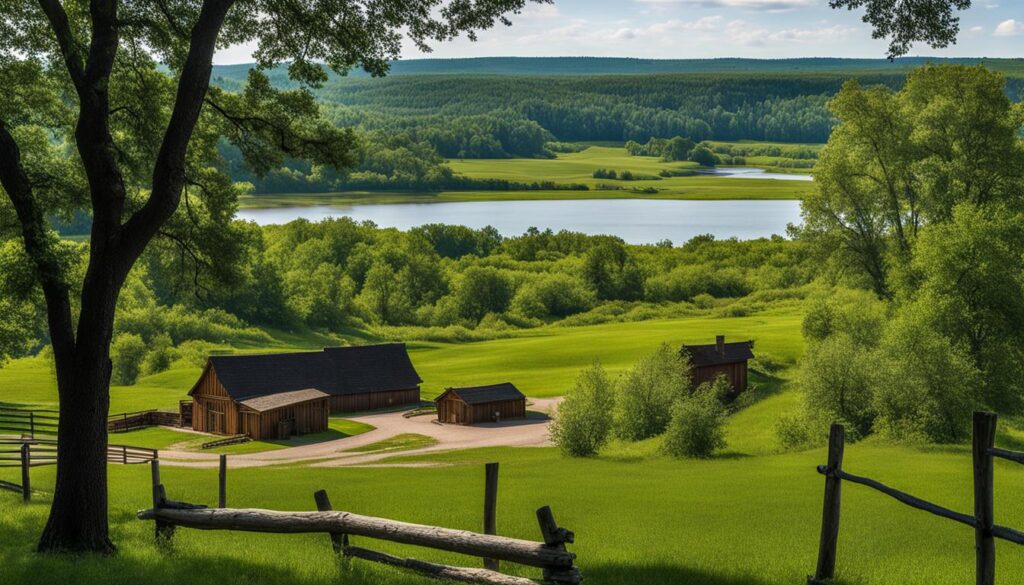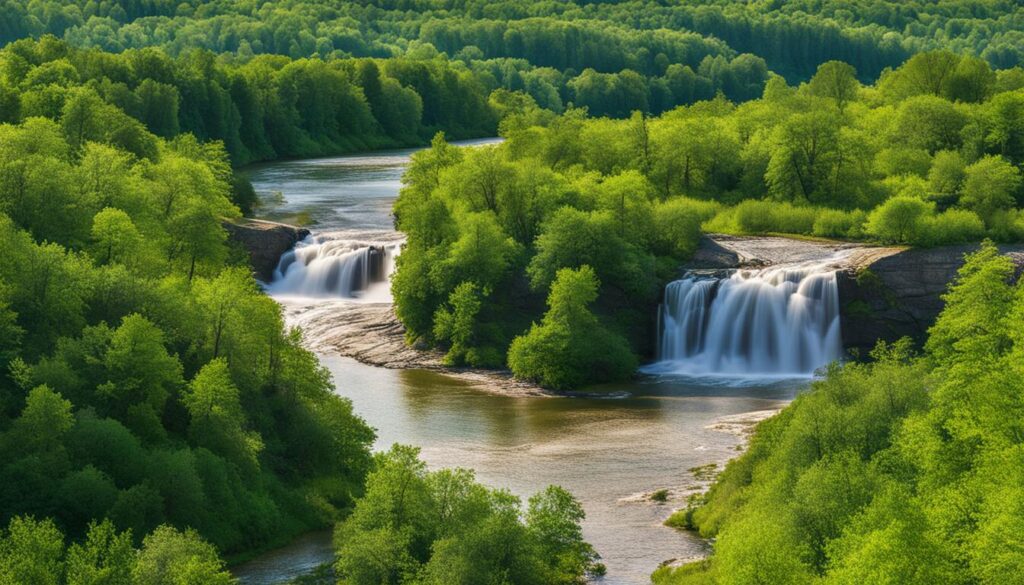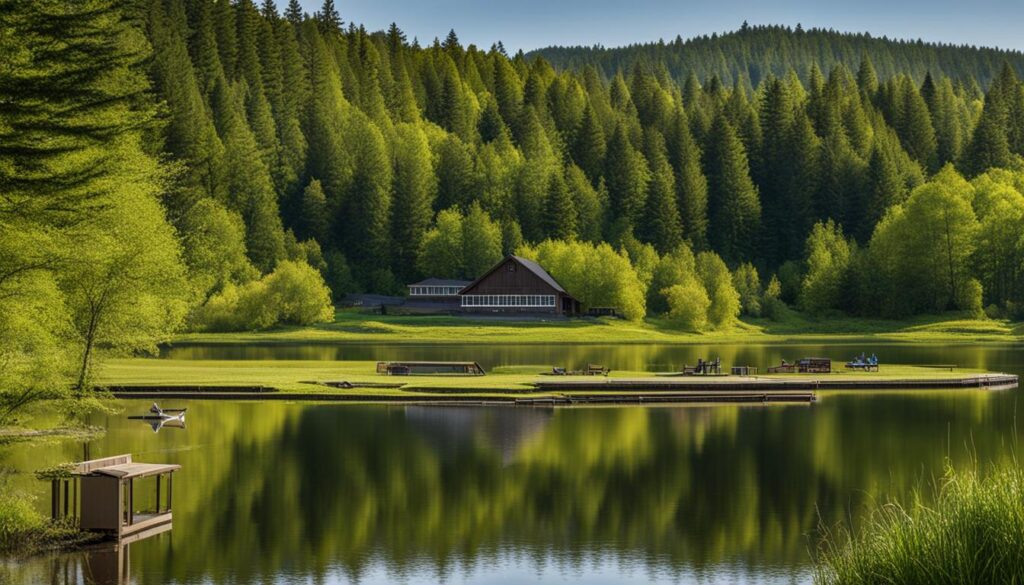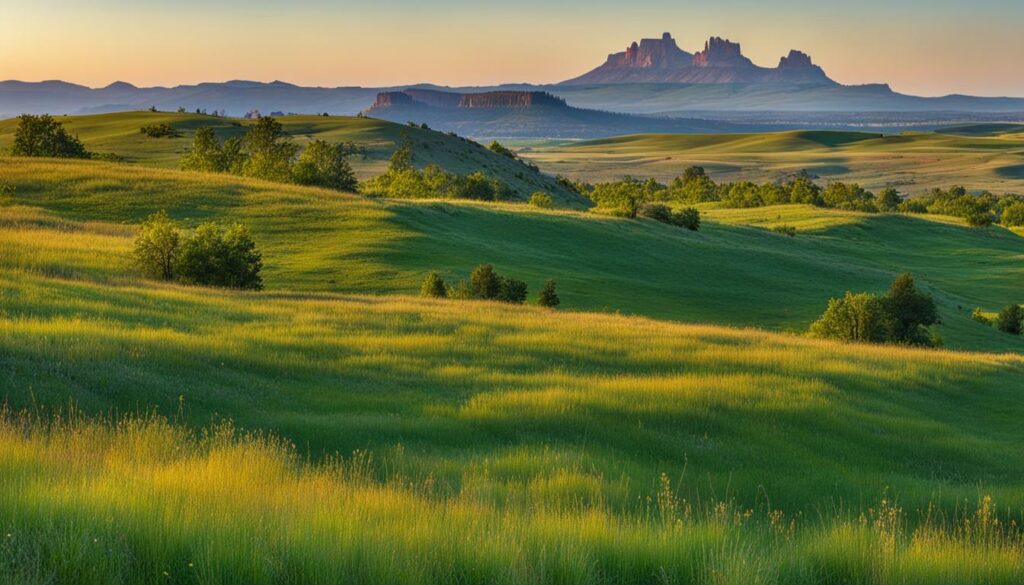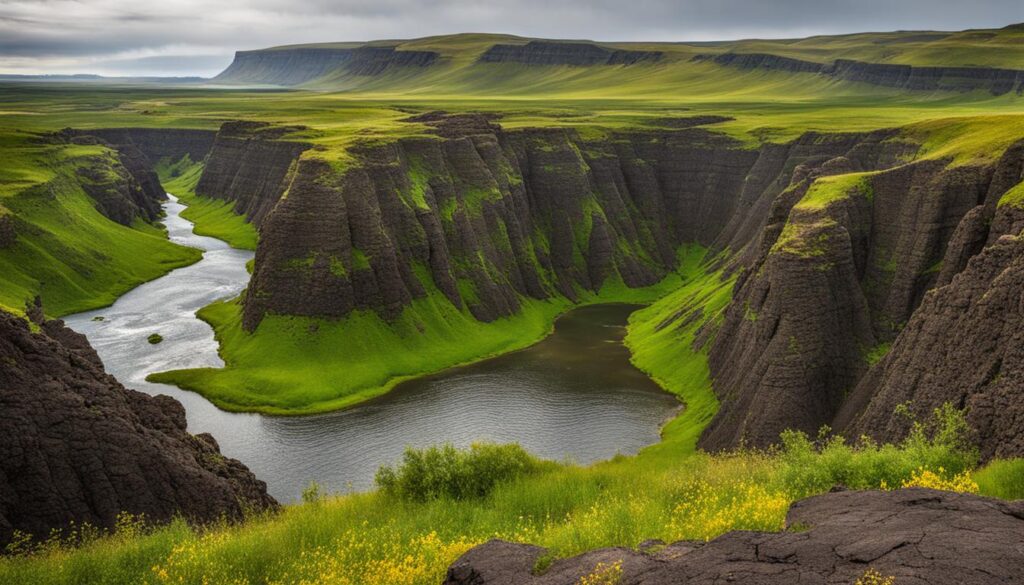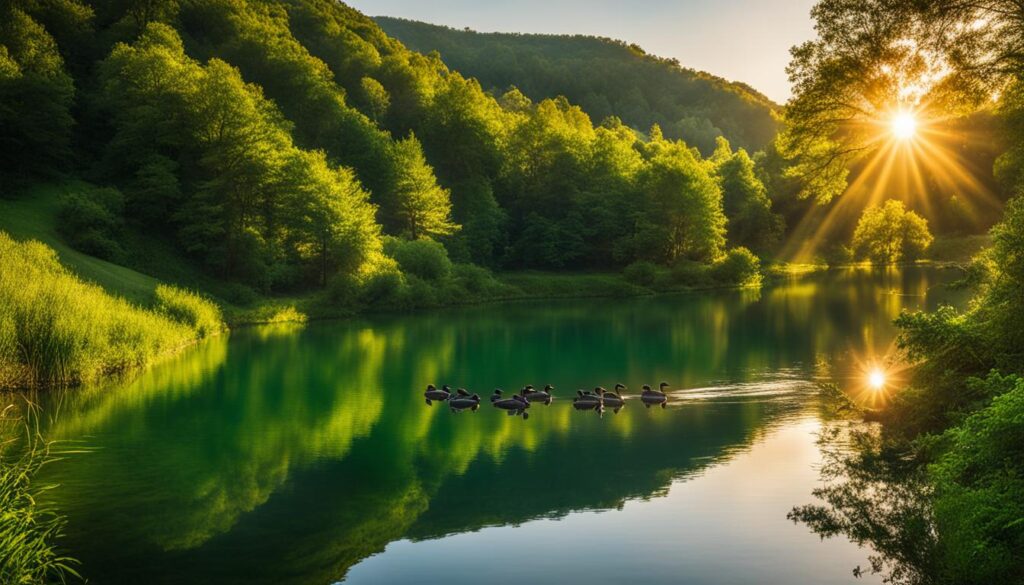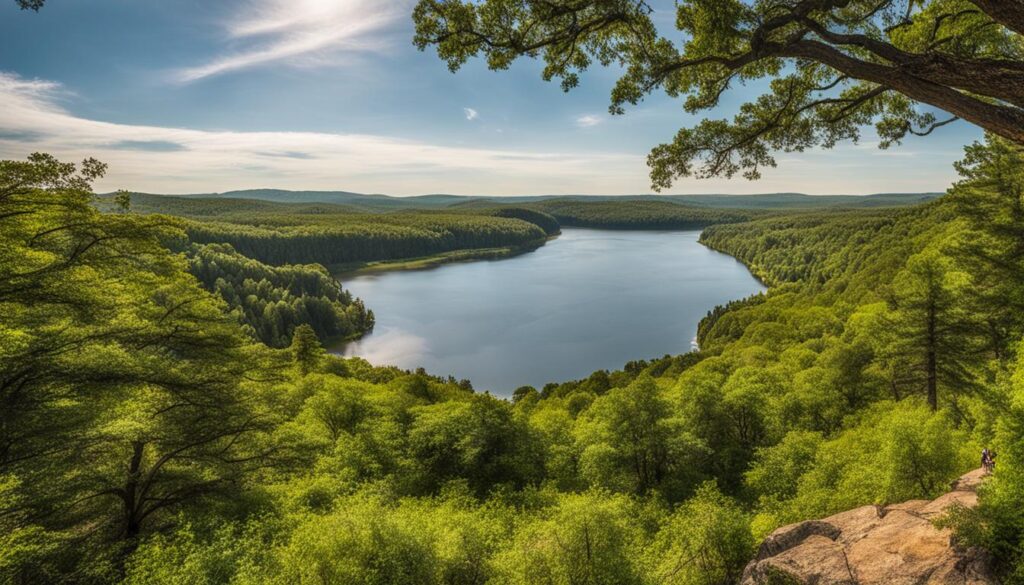Welcome to Fort Abraham Lincoln State Park, the oldest state park in North Dakota. Immerse yourself in the rich history and natural beauty of this incredible destination. Whether you’re interested in exploring historic forts, hiking scenic trails, or experiencing the culture of the Mandan Native Americans, this park has something for everyone. Join me as we delve into the fascinating world of Fort Abraham Lincoln State Park and discover all that it has to offer.
Key Takeaways:
- Fort Abraham Lincoln State Park is the oldest state park in North Dakota.
- The park offers a range of activities, including exploring historic forts, hiking, and experiencing living history tours.
- Visitors can enjoy stunning views of the Heart and Missouri river bottoms.
- The park provides a variety of accommodations, including campsites and camping cabins.
- Make sure to visit the Visitor Center and Commissary Store for a deeper understanding of the park’s history.
Contents
Essential Information for Your Visit
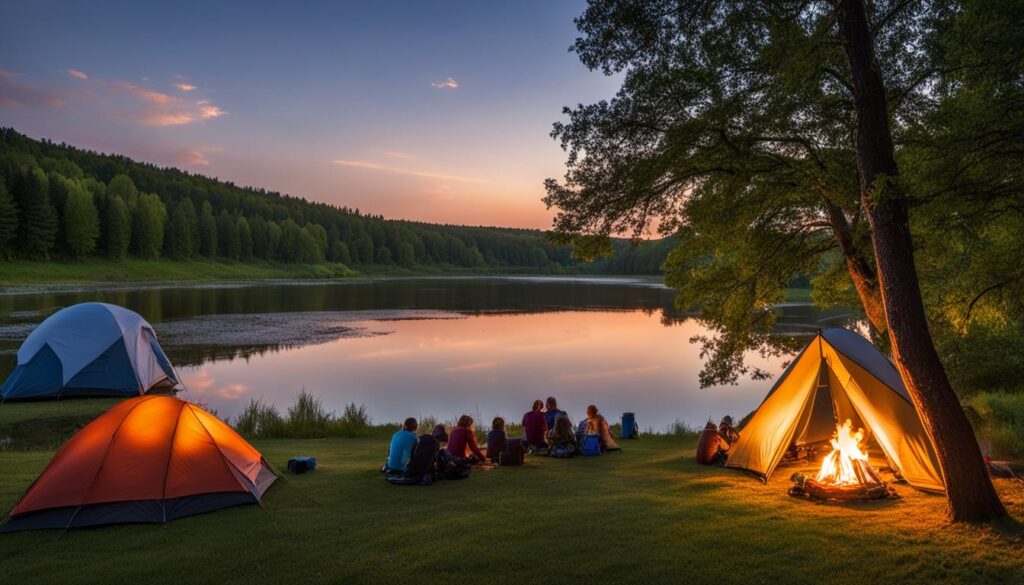
If you’re planning a visit to Fort Abraham Lincoln State Park, it’s important to have all the essential information to make your trip smooth and enjoyable. Whether you’re interested in camping near Bismarck, finding suitable accommodations, or understanding the park entrance fee, this section will provide you with the necessary details.
Camping and Accommodations
Fort Abraham Lincoln State Park offers a range of camping options to suit different preferences. With over 100 campsites available, you’ll have ample choices for your stay. The park also offers two seasonal camping cabins, equipped with air conditioning, heat, and a small refrigerator, providing a comfortable and economical getaway option. Additionally, there are modern campsites with electricity and water, as well as water-only campsites and equestrian campsites for those traveling with horses. Whether you prefer traditional tent camping or a cozy cabin, Fort Abraham Lincoln State Park has the accommodations to meet your needs.
Park Entrance Fee
When visiting Fort Abraham Lincoln State Park, there is a nominal entrance fee of $7 per car. This fee allows you full access to the park and its amenities for the day. It’s important to note that there is an additional fee for horse passes for equestrian riders. Visitors can easily pay the entrance fee at the park’s entrance gate or visitor center. Keep in mind that the entrance fee helps support the maintenance and preservation of the park, ensuring a memorable experience for future visitors.
Plan Your Visit
To make the most of your visit to Fort Abraham Lincoln State Park, it’s advisable to plan ahead. Consider the activities and attractions you’re interested in exploring and allocate enough time to fully experience the park. Additionally, take advantage of the nearby parks and trails in North Dakota that offer additional outdoor recreational opportunities. The official website of the State of North Dakota provides valuable resources and information on all the state parks in the area, including Fort Abraham Lincoln State Park. Here, you can find maps, camping reservation information, and more to help plan your visit and make it a memorable one.
Table: Accommodation Options at Fort Abraham Lincoln State Park
| Accommodation Type | Description |
|---|---|
| Campsites | Over 100 campsites available with options for electricity, water, and equestrian camping. |
| Seasonal Camping Cabins | Two cabins with air conditioning, heat, and a small refrigerator. |
Park Highlights and Activities
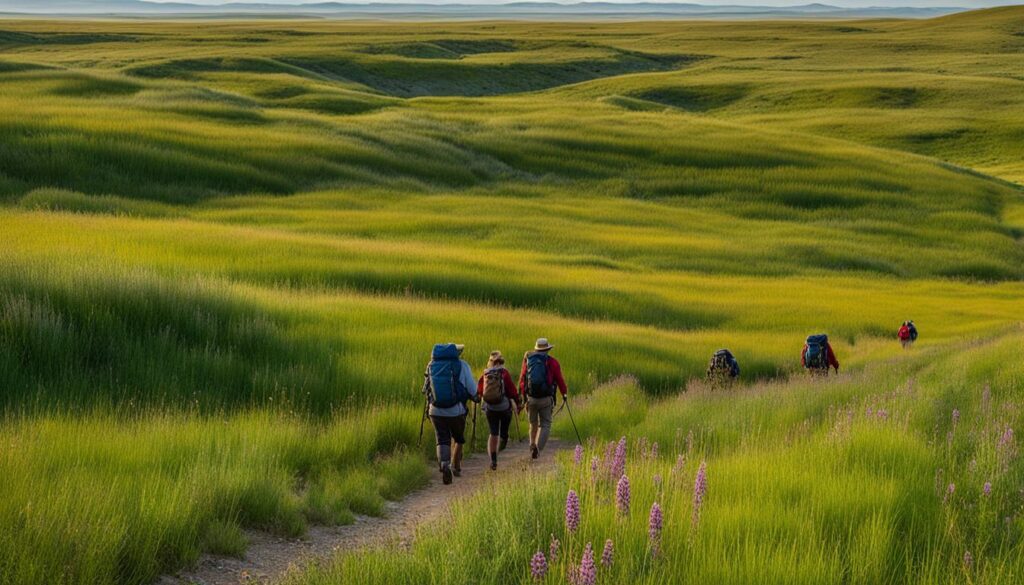
Fort Abraham Lincoln State Park offers a range of activities for outdoor enthusiasts and history buffs alike. With approximately 19 miles of non-motorized trails, the park is a paradise for hikers, bikers, and horseback riders. The trails wind through scenic landscapes, allowing visitors to immerse themselves in the natural beauty of North Dakota. Whether you’re a beginner or an experienced hiker, there are trails suitable for all skill levels.
One of the highlights of the park is its designation as a Lewis and Clark expedition site. History comes alive as you explore the artifacts and landmarks related to this famous expedition. Discover the stories of the brave explorers who ventured into the unknown, and gain a deeper understanding of their impact on American history.
The park’s location on the banks of the majestic Missouri River provides ample opportunities for water recreation. Boating enthusiasts can cruise along the river, taking in the breathtaking views of the surrounding landscapes. Anglers can cast their lines and try their luck at catching a variety of fish species, making for a memorable fishing experience.
| Activities | Details |
|---|---|
| Hiking | 19 miles of non-motorized trails |
| Biking | Scenic trails for all skill levels |
| Horseback Riding | Equestrian trails and campsites available |
| Water Recreation | Boating, fishing, and scenic river views |
Explore the natural beauty of North Dakota and discover the rich history of the Lewis and Clark expedition at Fort Abraham Lincoln State Park. With its diverse range of activities, there’s something for everyone to enjoy. Whether you’re a hiker, biker, angler, or history enthusiast, the park offers a unique and memorable experience.
Immerse yourself in the great outdoors and explore the wonders of Fort Abraham Lincoln State Park. From hiking trails to water recreation, there’s no shortage of activities to keep you entertained. Don’t miss the opportunity to visit this iconic park and create lifelong memories.
Exploring the Area
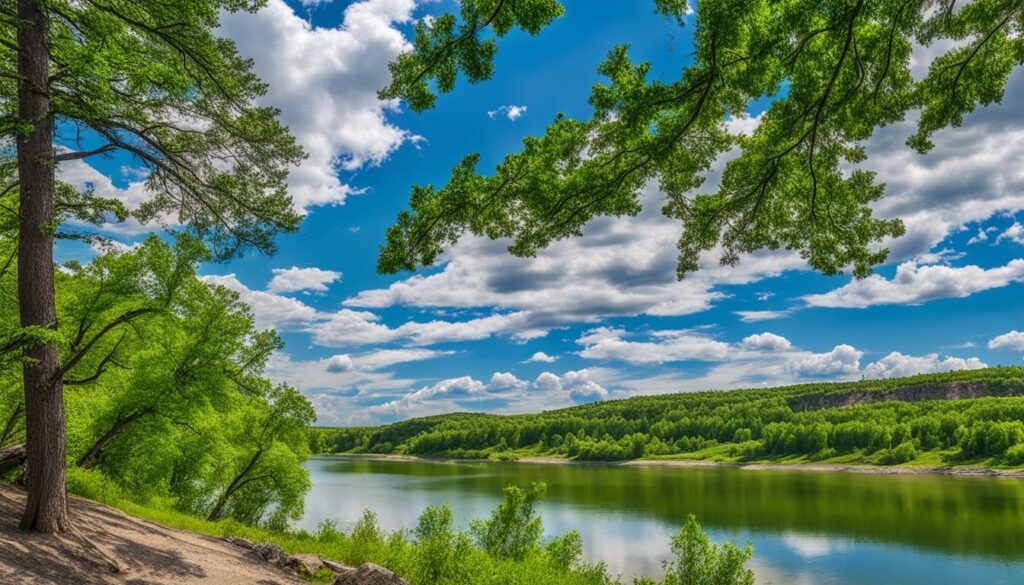
When visiting Fort Abraham Lincoln State Park, there are several nearby attractions that are worth exploring. One of these is the Mandan Indian Village, a state historic site located close to the park. The village features six reconstructed Earthlodges that provide a fascinating glimpse into the lives and culture of the Mandan people. It is a must-visit for those interested in Native American history and heritage.
In addition to the Mandan Indian Village, the park’s location on the banks of the Missouri River offers stunning views and ample opportunities for outdoor activities. Visitors can take in the picturesque Missouri River views while enjoying boating, fishing, or simply relaxing by the water. The river provides a serene and peaceful environment, perfect for unwinding and immersing oneself in the natural beauty of the area.
The history of the area is also intertwined with the famous Lewis and Clark expedition, and there are several historical landmarks and artifacts related to their journey.
The history of the area is also intertwined with the famous Lewis and Clark expedition, and there are several historical landmarks and artifacts related to their journey. Exploring the area around Fort Abraham Lincoln State Park allows visitors to follow in the footsteps of these legendary explorers and gain a deeper understanding of their impact on the region. It’s a unique opportunity to connect with the past and learn about the rich history of North Dakota.
Table: Nearby Attractions
| Name | Description |
|---|---|
| Mandan Indian Village | A reconstructed Native American village that provides insights into the lives of the Mandan people. |
| Missouri River | A scenic river offering opportunities for boating, fishing, and relaxation. |
| Lewis and Clark Historical Sites | Landmarks and artifacts related to the famous Lewis and Clark expedition. |
Exploring the area surrounding Fort Abraham Lincoln State Park is a wonderful way to enhance your visit and gain a deeper appreciation for the natural beauty and historical significance of the region. With its proximity to the Mandan Indian Village, the breathtaking Missouri River views, and the wide range of Lewis and Clark historical sites, there is something for everyone to enjoy.
Services and Facilities
When visiting Fort Abraham Lincoln State Park, visitors can take advantage of a range of services and facilities to enhance their experience. The park offers a Visitor Center where guests can delve into the rich history of the Mandan people, Lewis and Clark, and the military forts that once stood in the area. Inside the Visitor Center, you’ll find a captivating museum with exhibits that bring the past to life through artifacts, interactive displays, and informative panels. It’s the perfect opportunity to gain a deeper understanding of the region’s cultural heritage.
For those looking to bring home a piece of history, the park’s Commissary Store is a must-visit. Located in Cavalry Square, the store offers a wide variety of souvenirs that showcase the park’s unique heritage. From books on local history to authentic replicas and gifts, the Commissary Store has something for everyone. Additionally, visitors can enjoy a cup of coffee or a refreshing beverage at the full espresso bar, making it the perfect spot to relax and reflect on your visit to the park.
As you explore Fort Abraham Lincoln State Park, you’ll have the opportunity to discover numerous historic structures and features. One such feature is the On-a-Slant Indian Village, a partially reconstructed Mandan village that provides fascinating insights into the daily lives of the Mandan people. The village features earthlodges, interpretive signs, and educational programs that offer a glimpse into the region’s rich Native American history. In addition, the park preserves the remnants of the military fort, including the stately Custer House and the Civilian Conservation Corps buildings, which serve as a reminder of the park’s important past.
| Services and Facilities | Details |
|---|---|
| Visitor Center | Houses a museum with exhibits on the history of the Mandan people, Lewis and Clark, and the military forts |
| Commissary Store | Offers souvenirs, a historical bookstore, and a full espresso bar |
| Historic Structures and Features | Includes the On-a-Slant Indian Village, the military fort, and the Civilian Conservation Corps buildings |
Immerse yourself in the history and culture of Fort Abraham Lincoln State Park by visiting its Visitor Center, exploring the Commissary Store, and marveling at the park’s remarkable historic structures and features. These services and facilities add depth and meaning to your visit, allowing you to fully appreciate the significance of this extraordinary destination.
Park History
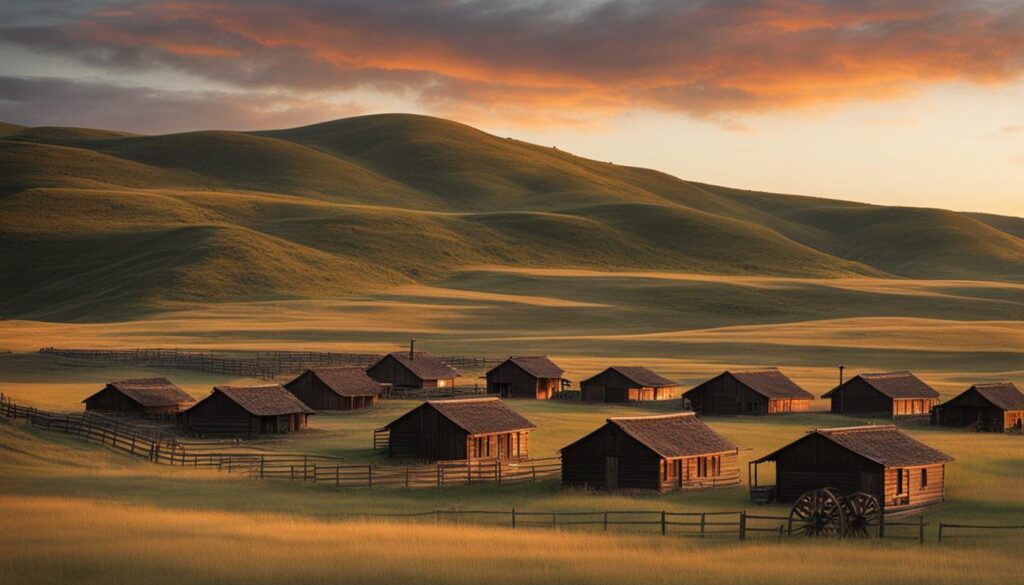
Fort Abraham Lincoln State Park has a fascinating history with connections to important historical events and figures. It was originally established as Fort McKeen, a U.S. military post, in 1872. The fort was later renamed Fort Abraham Lincoln and became one of the largest and most important cavalry posts on the Northern Plains. It played a significant role in the region’s history and served as home to the 7th Cavalry commanded by Lt. Colonel George Armstrong Custer. Custer and his men were stationed at the fort before their ill-fated last stand at the Battle of the Little Bighorn.
The park’s history is preserved through the various historic structures and features that can be explored today. Visitors can step back in time as they tour the old military fort and observe the reconstructed On-a-Slant Indian Village. These sites offer a glimpse into the daily lives of the people who once lived and worked in the area. The park’s museum in the Visitor Center also provides detailed exhibits on the history of the Mandan people, Lewis and Clark, and the military forts that once stood at the site.
“Fort Abraham Lincoln State Park showcases the rich history of the region and its connection to important events like Custer’s last stand. It’s a unique opportunity to immerse yourself in the stories and artifacts of the past.”
By exploring the park’s history, visitors can gain a deeper understanding of the region’s past and the significance of Fort Abraham Lincoln. The park’s historical sites and exhibits offer a truly immersive experience, transporting visitors back in time to the days of cavalry posts and Native American villages. It’s a testament to the importance of preserving and commemorating the history that has shaped the present-day North Dakota.
| Historical Facts | Details |
|---|---|
| Fort McKeen | Originally established in 1872 |
| Renamed Fort Abraham Lincoln | Became one of the largest and most important cavalry posts on the Northern Plains |
| 7th Cavalry | Commanded by Lt. Colonel George Armstrong Custer |
| On-a-Slant Indian Village | Reconstructed village showcasing daily life of Native American tribes |
| Visitor Center Museum | Exhibits on Mandan people, Lewis and Clark, and military forts |
Planning Your Visit and Additional Resources
When planning a visit to Fort Abraham Lincoln State Park, it is important to consider the activities and attractions you want to explore. With so much to see and do, allocating enough time to fully experience the park is recommended. Whether you’re interested in hiking the scenic trails, learning about the park’s history, or simply enjoying the natural beauty of North Dakota, proper planning will ensure a memorable visit.
While Fort Abraham Lincoln State Park offers a wealth of outdoor recreational opportunities, it’s worth noting that there are other nearby parks and trails in North Dakota that are worth exploring as well. From the stunning Theodore Roosevelt National Park to the picturesque Maah Daah Hey Trail, the state is home to a variety of natural wonders waiting to be discovered. Additionally, the official website of the State of North Dakota provides valuable information and resources on all state parks in the area, including Fort Abraham Lincoln State Park. Visitors can find maps, camping reservation information, and more to help plan their visit.
So, whether you’re a history enthusiast, an outdoor adventurer, or simply looking for a peaceful escape, Fort Abraham Lincoln State Park is a destination that has something for everyone. Take the time to plan your visit and explore the nearby parks and trails to make the most of your North Dakota experience. With its rich history, breathtaking landscapes, and abundance of recreational activities, this park is truly a hidden gem in the heart of the state.
FAQ
Are there camping facilities available at Fort Abraham Lincoln State Park?
Yes, Fort Abraham Lincoln State Park offers over 100 campsites, two seasonal camping cabins, and picnic shelters for visitors.
Do the camping cabins have amenities?
Yes, the camping cabins at Fort Abraham Lincoln State Park have air conditioning, heat, and a small refrigerator for visitors’ convenience.
What is the park entrance fee?
The park entrance fee at Fort Abraham Lincoln State Park is $7 per car.
What activities are available at the park?
Fort Abraham Lincoln State Park offers hiking, biking, and horseback riding trails, as well as boating and fishing opportunities on the Missouri River.
Is the park a designated Lewis and Clark expedition site?
Yes, Fort Abraham Lincoln State Park is a designated Lewis and Clark expedition site, with historical landmarks and artifacts related to their journey.
Can visitors explore the Mandan Indian Village?
Yes, visitors can explore the reconstructed Mandan Indian Village at Fort Abraham Lincoln State Park, which provides insights into the lives of the Mandan people.
What services are available at the park?
Fort Abraham Lincoln State Park offers a Visitor Center with a museum, a Commissary Store with souvenirs and an espresso bar, and numerous historic structures for exploration.
What is the historical significance of Fort Abraham Lincoln State Park?
Fort Abraham Lincoln State Park was once home to Fort McKeen, a U.S. military post and later renamed Fort Abraham Lincoln. It was also where Lt. Colonel George Armstrong Custer served before his last stand at the Battle of the Little Bighorn.
How can visitors plan their visit to Fort Abraham Lincoln State Park?
Visitors can plan their visit to Fort Abraham Lincoln State Park by considering the activities and attractions they want to explore. Additional resources and information can be found on the official website of the State of North Dakota.
